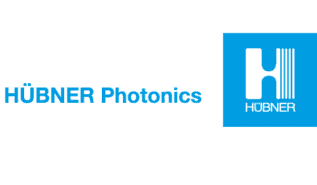Powerful blue lasers are producing the high-quality copper welds needed to make batteries for electric vehicles, as Richard Stevenson reports
If you want to curb your carbon-dioxide emissions, buying an electric vehicle is an increasingly attractive way of doing it. Purchasing incentives, tax breaks and scrappage schemes – not to mention the chance to drive to areas off-limits to gas guzzlers – are all persuading more people to switch. Alongside these tempting “carrots”, there is also a major “stick” on the horizon. Governments in more than a dozen countries have set dates for when they will ban the sales of new petrol and diesel cars, and the UK has gone one step further, prohibiting the sale of hybrid electric vehicles from 2035.
Given these measures, sales of electric vehicles are expected to climb sharply. Makers of batteries and electric motors are sure to benefit, along with companies that make tools that assist their production. But there are some hurdles to overcome. For battery manufacturers, in particular, the process of joining copper foils to create an anode with a large surface area has long been a rate-limiting step. Soldering these foils together is too slow, so instead they are welded with a directed heat source that causes the copper to melt. As the parts cool, they unite.
The standard way of welding copper is to use an ultrasonic heat source, but for batteries, this has three significant drawbacks. First, it ejects particulates of copper from the foil, and aluminium from the tool used, that can compromise the battery’s efficiency. Second, it means introducing a new ultrasonic weld head whenever the geometry of a specific weld changes. Finally, it tends to leave gaps between the foils in the welded area, producing a device with inadequate electrical current and poor mechanical strength.
A more attractive alternative – and one that addresses all these weaknesses – is to weld the foils with a high-power laser. Laser welding is also versatile, as it can be used to join copper during the production of electric motors and make electrical connections to copper busbars – that is, the metallic strips used to distribute power locally at high currents.
Unfortunately, the infrared sources that dominate the multibillion-dollar high-power laser industry are far from ideal for welding copper. One issue is that copper absorbs only about 2–5% of light at infrared wavelengths (700 nm – 1 mm). Welding it with a standard 1 μm laser therefore requires a great deal of energy – a problem exacerbated by copper’s high thermal conductivity. But that’s not the biggest barrier. A far greater concern is the poor quality of the welds. Once copper starts to melt, it absorbs infrared light much more strongly. As a result, it boils, creating low-pressure and high-pressure bubbles within the melt pool. Low-pressure bubbles fail to break free, and are frozen in place, creating voids; meanwhile, high-pressure bubbles eject material from the weld, creating spatter. In both cases, the result is weak welds with a high resistivity that increases electrical loss within the battery.
Benefitting from the blues
Neither problem is insurmountable. At wavelengths of 500 nm (visible blue light) or below, copper’s absorption rockets to around 50%, leading to superior welds and a heat conduction process that causes the metal to melt without evaporating. This reduces the need for re-working and streamlines production. The catch, of course, is that it requires a high-power laser designed specifically for welding copper.
At first glance, it might seem like a frequency-doubled infrared laser would be enough to solve the problem. In practice, though, the wavelength conversion process is inefficient, leading to high power loss. Conversion also requires complex cooling arrangements and a sophisticated optical set-up. Instead, leading companies – including Nuburu, a US start-up that launched in 2015, and Laserline, a Germany-based firm with a pedigree in high-power infrared laser manufacturing – are combining the output of tens or even hundreds of blue laser diodes into a single high-power source.
At first glance, it might seem like a frequency-doubled infrared laser would be enough to solve the problem. In practice, though, the wavelength conversion process is inefficient
The diodes in these new sources are based on gallium nitride (GaN). In some sense, they are descended from the ultraviolet GaN lasers invented in 1996 by Shuji Nakamura, who shared the 2014 Nobel Prize for Physics for inventing a related device, the blue LED. These earlier lasers, which Nakamura developed during his time at Nichia in Japan, found their first application in Blu-ray players, where outputs in the tens of milliwatts made it possible to read information off discs.
In theory, it would be possible to combine the outputs of thousands of these low-power ultraviolet laser diodes to produce a source with enough power to weld copper. However, the result would be bulky as well as very tricky (and costly) to put together. Instead, Nuburu and Laserline have drawn on recent advances in the performance of GaN laser diodes. Over the past decade or so, chipmakers have focused on making powerful blue lasers for colour projectors. Substantial gains in output power have followed, along with a shift in emission from ultraviolet to blue.
The increase in output power stems, in part, from reducing the material defects within GaN that tend to quench its emission. An increase in the volume of the laser’s active region also played a role. Normally, another way of increasing the power of a semiconductor laser is to make its cavity longer – that is, you increase the distance between two mirrors that are at either end of the cavity. However, this cannot be done with a GaN laser – at some point the level of absorption becomes too high, and too much light is lost before it reaches the mirror. On the other hand, you can increase the “ridge width”. The ridge is used in a compound semiconductor laser to control the light coming out from the laser chip – the wider it is, the more light comes out and therefore the more powerful the laser. The ridge width of GaN lasers has gone from just 2 μm or so in lasers used in Blu-ray players to 40 or even 50 μm for the most powerful diodes.

Today, Nichia’s most powerful blue laser diodes have an output of several watts. However, they are not ideal for building sources of several hundred watts or more, because they are housed in bulky metallic cans. A better solution is the bare laser chips produced by the world’s other leading source of blue lasers, Osram Opto Semiconductors. Based in Regensburg, Germany, Osram OS is a wholly owned subsidiary of Osram, and over the past decade it has significantly improved the performance of its blue laser diodes. Back in 2008, the output powers of these diodes were limited to 60 mW, with an efficiency of just 15%. By 2017 these figures had leapt to 3.5 W and 44%, while in 2019 company officials reported even higher efficiencies, of 46%, for a chip emitting 2.2 W.
In early 2016, Osram OS started working with Laserline on a three-year project aimed at producing a kilowatt blue laser. This effort, known as Blaulas – a portmanteau of blau, the German word for “blue”, and “laser” – had the backing of the German Federal Ministry for Education and Research and a budget of €5.8m. It also drew support from other teams within academia and industry, including laser-characterization specialists at the Max Born Institute in Berlin.
Working with bars…
The Blaulas project attempted to replicate the established approach for producing powerful infrared sources. Like their blue counterparts, individual infrared laser diodes emit no more than a few watts. To propel their output to several kilowatts, manufacturers produce a strip of lasers known as a laser bar. These bars can then be stacked on top of one another to further increase the device’s output. This is an elegant way to scale output power, since rather than using lenses to individually align the output from each laser, two lenses can control the emission from an entire bar.
At the outset, though, many researchers in the GaN laser-diode community did not think it would be possible to produce a high-power bar at blue wavelengths. Due to the high level of defects in the material, they reasoned that some lasers in the bar would fail to emit. These failed lasers would have a lower forward voltage – meaning that all the current would be routed through them, and the bar would be destroyed.

To avoid this, Harald König and colleagues on the Blaulas project at Osram worked to improve the GaN growth process, increasing the material’s homogeneity and reducing defects. They also refined the design and processing steps. The result – made public at the Photonics West meeting in February 2018 – was the world’s first high-power GaN laser bar, with 23 emitters delivering a 98 W output when driven at a current of 60 A, and an efficiency of 46% when operated at the intended output of 50 W. More recently, König and the Blaulas team have improved the bars’ performance still further. At the 2019 Photonics West meeting, they reported a 107 W output from a bar with 23 emitters. “I’m really proud that we proved them wrong,” König says.
To push output power beyond the 100 W range, the engineers at Laserline stack together many bars, mounting them on heat sinks to prevent overheating. During the Blaulas project, they made two stacks of 10 bars, and used polarization coupling to combine their output into a fibre and create a 730 W source. The fibre-coupled blue lasers in Laserline’s portfolio now have output powers ranging from 300 W to 1.5 kW and “a very nice ‘top-hat’ intensity profile coming from the fibre”, according to Laserline technology and product manager Simon Britten. When used to weld copper, Britten explains, a regular profile produces a very even temperature distribution across the weld, improving the weld’s quality.
…and single emitters
At Nuburu, laser experts have taken a markedly different approach to making high-power blue lasers. Rather than using bars, the Colorado-based start-up is relying on single emitters. According to Jean-Michel Pelaprat, who co-founded Nuburu with fellow laser diode industry veteran Mark Zediker, one advantage of this approach is that single emitters have a longer lifetime than bars. Work at Osram OS indicates that the average single emitter lasts about 65,000 hours, which is five times longer than a bar – although the shorter lifetime of bars is nevertheless considered long enough for the industrial-lasers market.
The real reason for using a collection of single emitters, though, is their higher beam quality. A common metric for judging the quality of the beam is the beam-parameter product, which is equal to the smallest radius of the laser beam, multiplied by its divergence angle. Taking the power of the laser and dividing it by the beam-parameter product gives the brightness, and squaring this gives the power density – the key figure to consider when welding. Working through the maths, this means that halving the beam-parameter product quadruples the beam’s power density, allowing the laser to complete a weld four times faster – or penetrate 60% deeper into the metal, as Pelaprat points out.

To ensure a high beam-parameter product, Nuburu’s design positions a lens next to each emitter to correct any difference between them. A total of 20 laser diodes are placed together to create a 50 W source, while four of them are combined with interleaving mirrors to form a 200 W “engine”.
These engines form the heart of Nuburu’s first generation of products, known as the “AO” series after the Japanese word for “blue”. The AO-150, which was released in 2017, has a single 200 W engine, offering a substantial margin for the specified output of 150 W, and a beam-parameter product below 15. The following year, Nuburu launched the AO-500, which it formed by combining four of its 200 W light engines. To reduce energy loss, this design avoids traditional beam splitters in favour of a series of mirrors and a polarizing cube that focus the beams of 320 lasers into a fibre. This ensures a coupling efficiency of more than 90%. Although combining the output of four engines compromises the beam-parameter product, it is still less than 30.
Market traction
Both Nuburu and Laserline report a great response to the launch of their blue lasers. “I thought at the beginning that we would have to do a lot of evangelization, but we didn’t,” Pelaprat says. In February 2020 Nuburu launched a source that breaks new ground for the beam-parameter product. The new line, dubbed the “AI” (Japanese for “deep blue”), is based on a light engine that is five times smaller than its predecessor, produces 500 W, and has a beam-parameter product below five. The first product, the AI 1500, combines four of these new light engines to deliver an output of at least 1.5 kW, with a beam-parameter product below 11.
According to Pelaprat, the AI 1500 is the first source that is powerful and bright enough to be paired with a scanner for welding busbars. By combining several high-power sources, Pelaprat thinks they could achieve still higher powers. “It could go way beyond 10 or 20 kW,” he says. “There are no limits.”
For Laserline, the introduction of the 1 kW laser has spurred sales growth thanks to a greater processing speed than its 500 W cousin and an ability to process thicker copper. The desire to expand processing capacities still further has also driven Laserline to investigate the benefits of overlapping beams of blue and infrared lasers. According to Britten, welds in copper are limited to about a millimetre’s depth when using a blue laser, but can be far deeper when a powerful infrared laser is added to the mix. “There is a synergy between both wavelengths,” he says, adding that while the blue laser creates the initial melt pool in the copper, infrared emission can help keep the copper molten.
As Nuburu and Laserline develop higher power sources, they are in an envious position of seeing their existing products improve through gains in the efficiency of laser diodes. This efficiency is currently climbing at around one or two percentage points per year, steadily making its way from current values above 35% towards a likely upper limit of 70%. While the higher figure is a goal that can only be dreamt of today, there is no doubt that the future is very bright for the high-power blue laser, and it’s only going to get brighter still.
- Article updated 24 June 2020 to match print edition.
Physics World’s Laser at 60 coverage is supported by HÜBNER Photonics, a leading supplier of high performance laser products which meet the ever increasing opportunities for lasers in science and industry. Visit hubner-photonics.com to find out more.





